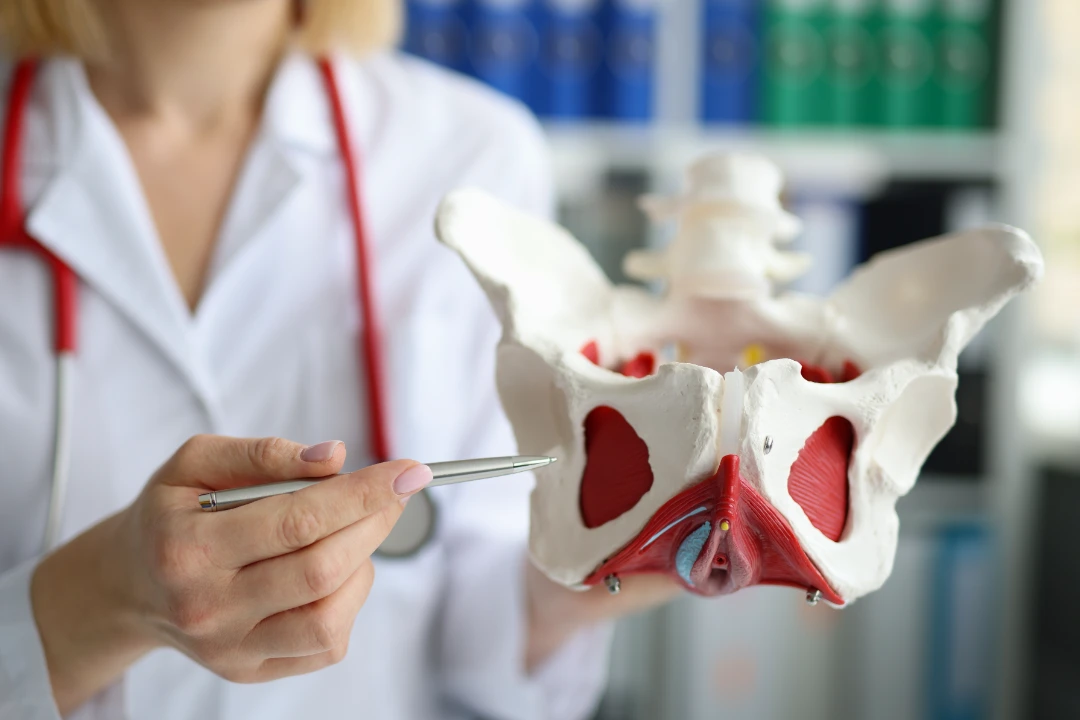
The main cause of this is weakened pelvic floor muscles from damage sustained during pregnancy and childbirth as well as weakening from ageing and menopause. Another major cause of POP involves chronic increased pressure on pelvic floor muscles e.g. obesity, chronic cough, chronic constipation, jobs that involve heavy lifting/straining.
Some women have no symptoms at all and are only picked up during a routine gynaecology check. Others may have symptoms that include:
This is the most common, is medically called a cystocele, and involves the bladder bulging into the vagina through the front wall.
This is second most common, where the uterus drops into the vagina. For women with previous hysterectomy (removal of the uterus), the top of the vagina may collapse downwards out of the vaginal opening.
Because of the common cause of weakened pelvic floor muscles, many women may suffer from both POP and urinary incontinence.

You should consult a urogynaecologist, who is a gynaecologist specialising in female urinary disorders, to determine what type of pelvic organ prolapse you have, its severity and your treatment options. Your doctor will take a detailed medical history and perform a pelvic examination to check for the stage of your pelvic organ prolapse and pelvic floor muscle tone. An ultrasound scan will need to be performed to check your uterus and ovaries, and a bladder scan done to check the amount of urine remaining in your bladder after you have passed urine). Depending on your symptoms, you may also require urine tests and Pap smear/HPV test.

Some women may choose to do nothing and just observe if they are not having any symptoms. Treatment options include non-surgical and surgical.
Kegel (pelvic floor) exercises
These strengthens the weakened pelvic floor muscle tone and can improve mild pelvic organ prolapse. Kegel exercises need consistent daily efforts for at least 3 to 6 months to see results. Click here to find out how to do them.
Lifestyle changes
Avoid increased pressure on pelvic floor muscles by losing weight to maintain a healthy body mass index (BMI), treating conditions such as chronic cough and constipation, not lifting heavy loads.
Vaginal pessaries
These are soft, removable devices that is inserted in your vagina to support your prolapsed pelvic organs and hence provide relief of your symptoms of POP. Read more about them here.
This is the most common approach as the pelvic organs are drooping out from the vagina. If the uterus is prolapsed, there is no plans for more children and the woman has no desire to keep her uterus, a vaginal hysterectomy will be performed. The ovaries can be conserved if they are normal.
Surgery for prolapse in the other compartments (pelvic floor repair) involves making a cut in the vagina and separating the prolapsed organ away from the vaginal wall. Stitches or mesh are used to strengthen the defect in the supporting tissue, and the vaginal skin is closed to reduce the bulge.
If this is done for the bladder, it is known as an anterior repair or colporrhaphy. If this is done for the rectum, it is known as a posterior repair or colporrhaphy. In some cases, additional permanent sutures may be placed to hitch the top of the vagina to a strong ligament in the pelvis to provide additional support (sacrospinous ligament fixation/SSLF). Overall, there are no cuts on the abdomen.





Aster Gynaecology © | All Rights Reserved.